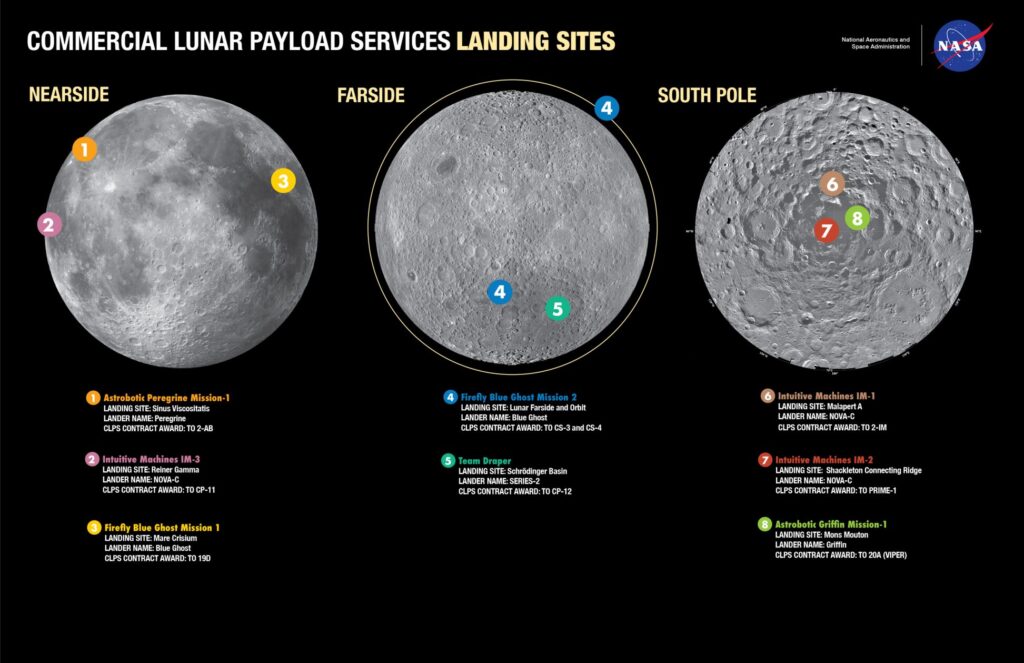America returned to the Moon, 52 years after the Apollo 17 mission. Certainly, the private mission IM-1 was not manned, but it remains a successful moon landing. Above all, it symbolically marks the start of a return of the United States to the Moon. Many other missions will follow one another, before the arrival of the astronauts.
“ On day eight of a quarter-million-mile journey, Intuitive Machines made the landing of a lifetime. » Words from Bill Nelson, the head of NASA, pronounced on the night of February 22 to 23, were far from being hackneyed. The American company managed to land on the Moon without incident.
This is a real performance from Intuitive Machines. Beyond this express trip, it is above all a historic moment for the United States, as the head of the American space agency recalled: “ For the first time in half a century, America returned to the Moon. » We have to go back to 1972 to find such a feat.

It was a different time then. It was the time of the Cold War and the clash between geopolitical blocs. The Soviet Union and the United States had embarked on a space race. A competition which ended, on the American side, with this famous mission of 1972. It was Apollo 17, the last to be manned and to have been on the Moon.
If Bill Nelson’s congratulations went so far as to evoke a real ” triumph for humanity “, the fact remains that the profile of the IM-1 mission remains significantly more modest than that of Apollo 17. On the one hand, it is in no way a manned mission. And on the other hand, IM-1 will only operate for a week.
It prevents. This arrival made it possible to close this long parenthesis after 52 years of interruption. Above all, the successful moon landing of the IM-1 mission occurred on February 22 at 11:23 p.m. erases the regrettable failure that occurred a few weeks earlier. Indeed, it was expected that this success would go to the Peregrine mission. But it went wrong.
The IM-1 mission transports some scientific instruments to the lunar surface. All this should consolidate NASA’s preparations for the return of manned missions to the natural satellite, in principle from 2026. Humanity’s big meeting with the Moon, initially planned for 2025, has been postponed until ‘a year.
The Moon will have many visits in the years to come
Until then, other missions similar to IM-1 will follow one another in the months and years to come. Indeed, both Peregrine and IM-1 are part of a program called CLPS (Commercial Lunar Payload Services). For NASA, this involves calling on the private sector to provide various services to support the Artemis program.
And the least we can say is that there will be traffic between the Earth and the Moon in the near future.


According to NASA’s schedule, there are at least four other CLPS missions planned in 2024: Blue Ghost Mission 1, from the company Firefly Aerospace, and IM-2 and IM-3, from the company Intuitive Machines. Astrobotic, which failed with the Peregrine mission, will try its luck again with the Griffin Mission-1 mission.
The following year, the Series-2 mission from the Draper company is expected. The Blue Ghost 2 flight is also planned for 2026. This schedule is likely to change depending on the usual imponderables of this type of project. Furthermore, the agenda is not complete. As part of the CLPS program, there are many other providers announced.
Among the names on NASA’s list, we can note SpaceX, Blue Origin, Ceres Robotics, Deep Space Systems, Lockheed Martin Space, Masten Space Systems, Moon Express, Sierra Nevada Corporation, Orbit Beyond and Tyvak Nano-Satellite Systems . The tasks entrusted to them are very diverse.
Subscribe for free to Artificielles, our newsletter on AI, designed by AIs, verified by Numerama!
